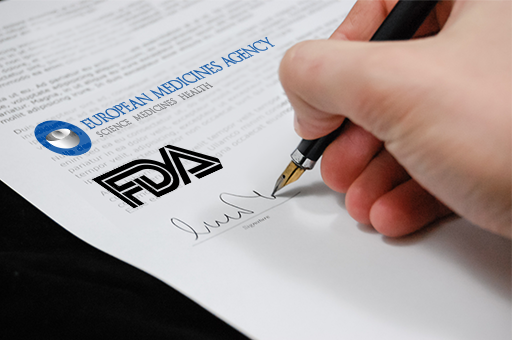Managing an eTMF (electronic trial master file) is difficult. Some organizations, however, impose burdens on themselves by employing practices that are inconsistent with Health Authority guidance. In this blog, we examine common myths and provide specific agency guidance that debunks these "myths." So without further ado, let’s get to it!
Myth 1: We must do 100% QC on all eTMF documents
While organizations may choose to perform 100% QC on all documents before finalization, this is not a requirement of the Health Authority. For certified copies, for example, EMA guidance states: In addition to TMF-level QC..., there should be adequate risk-based document-level QC, as described...
The EMA and MHRA also describe the quality checks that are required to confirm the accuracy of scanned documents. According to the MHRA GCP:
Some eTMF systems require a review of each scanned document before it is approved within the eTMF, but all transfers should be certified for accuracy and completeness as part of the quality system by someone with appropriate authority (for example, the trial manager). This does not necessarily imply that the individual has reviewed every document, but that they have approved the validated system in use.
Organizations may choose to perform 100% QC on documents for a variety of reasons. For example, the organization could be new to eTMF, lack evidence that less than 100% QC is justified, or lack technology that allows for a risk-based, sampled approach.
However, the Health Authority's expectation of 100% QC should not be used to justify this decision.
Myth 2: It is OK as long as the TMF is completed at the end of the research.
Those adding papers to an eTMF may not always feel compelled to do so in a timely manner. They may believe that the sponsor's duties have been met if all relevant paperwork are filed at the end of the trial. In general, health authorities disagree with this stance, as evidenced by the following MHRA GCP quotes:
Documentation in the TMF that is relied on for subsequent activities should thus be in the TMF before these activities take place; for example, monitoring visits rely on information in the previous report, so the previous report should be completed and filed in the TMF before these activities take place.
It may raise issues during an inspection if the TMF looked to be so out of date that the organization's capacity to govern and regulate trial conduct was called into doubt. It should be noted that MHRA GCP inspections might be unannounced or done on short notice, and even normal inspections may not include a notification of the trials to be examined until soon before the inspection, therefore the TMF must be kept in a "inspection-ready condition." This is especially true for TMFs generated after the trial, as these TMFs must be "full and readable."
If you've watched an MHRA presentation, you've undoubtedly seen a graph that showed a sponsor had uploaded a substantial amount of papers in the weeks leading up to the inspection, and thus wasn't keeping the TMF up to date. To address this issue, best practices include educating contributors on the need for timely submissions, as well as methods for evaluating TMF completeness and timeliness for active trials.
Myth 3: We don’t have to validate a commercial eTMF
Several sponsors and CROs, encouraged by some suppliers, have assumed that a commercial eTMF is totally "pre-validated" and does not require any validation or User Acceptance Test (UAT) by the organization. But, the Health Authorities do not anticipate this.
When questioned about "UAT and test scripts created by vendor," Andy Fisher of the MHRA stated: "The sponsor should be testing trial requirements and performing UAT scripts - looking at problems and how they are resolved." Suppliers should have supervision over the sponsor's UAT.
What should sponsors and other regulated organizations consider when opting to verify outsourced electronic services used in clinical trials, according to the FDA?
For outsourced electronic services, a risk-based validation strategy similar to that outlined in section IV.A.Q1 should be used. It is ultimately the sponsor's or another regulated entity's obligation to guarantee that the outsourced electronic service is verified as appropriate. Sponsors and other regulated organizations should receive documentation from the electronic service provider that includes, but is not limited to, a description of standard operating procedures and testing and validation results to ensure that the outsourced electronic service performs as intended.
And finally, the EMA advises:
The functioning of the eTMF systems should be validated to demonstrate that it is suitable for purpose, with formal processes in place to manage this process.
As a result, a sponsor or CRO must create and record a risk-based User Acceptance Test procedure to guarantee that the commercial system fulfills the user requirements and is fit for purpose. It is acceptable to employ vendor-supplied materials, but there must be proof that they meet user needs and that the risk-based approach is justified.
Myth 4: Everything has to be kept in the primary eTMF
Many records and documents in the TMF may not need to be stored in the principal eTMF, particularly if they are records or data rather than documents.
The MHRA has frequently addressed the question of whether it is prudent to convert everything to pdf or move files into the eTMF system, or whether long-term retention (archive) and direct access are best served by keeping them in original systems. MHRA's Andy Fisher commented on this at the TMF Conference in 2018:
So, how many systems are too many?
A decent figure! It all depends. Suggest putting as many documents as feasible in the principal TMF system and reducing the number of systems that store TMF documents. As long as its location is specified, the protocol can be retained in a distinct system.
The EMA emphasizes the need of retaining dynamic data, which may be impossible in an eTMF:
The appropriateness of the storage system should be assessed based on the file format used, for example, whether the eTMF-document-management system is suitable for the storage of dynamic data files (e.g., Excel files and SAS datasets) where required and does not require such files to be rendered as a PDF. PDF files generated from dynamic data files in other systems (e.g., IMP shipping reports generated from IRT datasets and monitoring visit reports generated from CTMS datasets) may be uploaded to the primary TMF system via the eTMF-document-management system; if so, the original dynamic file should be retained in the original system.
Myth 5: “All you need is the documents” – when archiving an eTMF from a CRO
21 CFR Part 11 specifies unequivocally that audit trails must be kept throughout the life of the linked data. As Andy Fisher of the MHRA has explained on several occasions, this also applies when an eTMF is moved from CRO to sponsor.
Sponsors must guarantee that all data and information are archived. There have been reports of just flat pdfs being preserved with no audit trails, preventing the trial from being properly recreated.
Where to keep the audit trails if you import them?
TMF is defined by a variety of systems. Thus, if you have a large dataset, you must consider what is the ideal system to keep it in; you must define it for yourself and just guarantee that you can locate them. Sponsors should obtain the audit trail from the vendor along with the eTMF. Because most eTMFs cannot blend imported audit trail records with their own, it is critical to describe how a migrated eTMF's audit trail will be maintained and kept.
How Can Octalsoft Help
Octalsoft's eTMF software solution provides a digital platform and strategy for electronically capturing, organizing, sharing, and storing all critical documents, photos, and artifacts that develop over the course of a regulated clinical trial. The system includes the DIA TMF Reference Model, which enables users to organize their content according to a known taxonomy and structure. Built-in checklists and milestone tracking capabilities enable you to actively assess the completeness and compliance of any material in real-time.
Learn even more about Octalsoft eTMF here. Got questions or are curious about how to leverage it in your studies? Book a Demo with us today!



